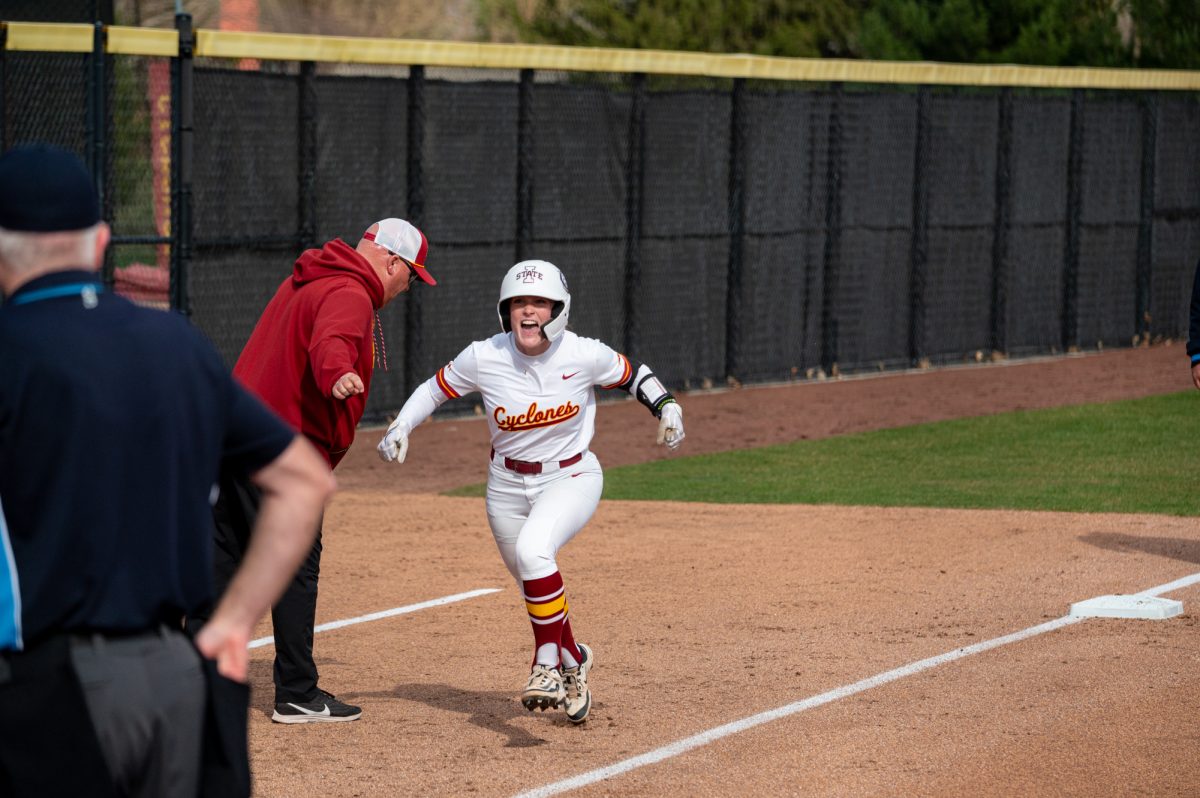TRACK AND FIELD:New practice attitude helps out throwers
April 19, 2009
Editor’s note: This is the first of a four-part series discussing a typical workout for the major different groups of the ISU track-and-field teams. Today will highlight the throwers, with subsequent articles discussing sprinters, jumpers and distance runners.
Freshman Dan Newhouse lined up for another quick toss.
His feet were set, and the javelin was cocked and loaded, ready to be thrown.
The approach was fluid, his form was solid, and the release was strong — but the javelin’s path through the air wasn’t the smoothest. It floated and fluttered up into the sky like a paper airplane before rapidly descending to the ground.
Upon landing, the javelin struck a small steel post in the ground 200 feet away from where it was released.
“Oh, it’s a dead ringer!” yelled assistant coach John Dagata excitedly.
“Yeah, but it probably broke the tip off of the javelin,” replied junior Robbie Utterback, ending the smiles and laughter of his teammates.
“Come on, Robbie,” Dagata joked. “Do we really need the negative attitudes?”
That’s where it begins for the throws group of the ISU track-and-field team: attitude. Dagata demands that his athletes focus on each of their throws during any given workout. That focus drives the group to improve and get the most out of their talent, he said.
Even on an easier-than-normal day, the throwers do everything the way they would on a typical day.
“Nobody takes them any lighter than any other day,” said sophomore Britta Christofferson. “We know how important they are, so we know that we have to get through them and work at the same pace we have been.”
Dagata takes it further, saying his team now expects to do great things instead of just hoping for it. It also helps to make each throw more than just a practice by creating a competition-type environment throughout workouts.
“I’ll call them up, say ‘You’re up, you’re on deck. So-and-so is on deck, get it going now, now’s the time,’” Dagata said. “I’ve got to put them in those real-life situations.”
On any given day the throwers will go through hundreds of throws in their area. Sometimes an athlete such as Christofferson will complete a full workout in both the shot put and hammer throw.
A combination of factors determine the workload during a workout, such as an injury, or where Dagata thinks athletes are mentally and physically in their development.
“It varies on what we’re trying to accomplish,” Dagata said. “For instance, [Newhouse’s] workout is going much longer than usual because I think he’s really on a concept.”
The lighter load during a pre-meet workout also allows time to recover from the strenuous workouts from earlier in the week,
“It’s just a chance for the body to recover a little bit between our big-lifting days,” Christofferson said. “That’s really important, because if we just lifted straight through the week hard every single day we would just be burnt out.”
Aside from throwing, the athletes go through two workouts each day. This afternoon workout contains some light lifting, range-of-motion exercises and running.
Dagata analyzes his athletes’ running abilities, and uses it as another tool to further develop their abilities. He said if they can rightly coordinate the fast movements of their running, then they will better be able to coordinate the fast movements of their throws.
The athleticism of this group is something Dagata said he is very proud of, and sees as the key to their success. Also, the youth of the group has him excited, as Utterback is the lone junior and there are only two seniors — Zac Brouillette and Amy Waggoner.
However, because they are such a young group, Dagata said he has a greater responsibility to balance work and rest throughout the week.
“As you get throughout the year, specialization on each athlete becomes more important because they all need something different,” Dagata said. “They all need more or less of something that I perceive will beneficial for their Big 12 performance.”
In the end, though, it comes back to the attitude of the group. Their mentality through each practice is more important than the actual workload.
“Nothing will stop us,” Dagata said. “Not if it’s 20-below or raining. Nothing will stop us now, and that’s what this is about.”






